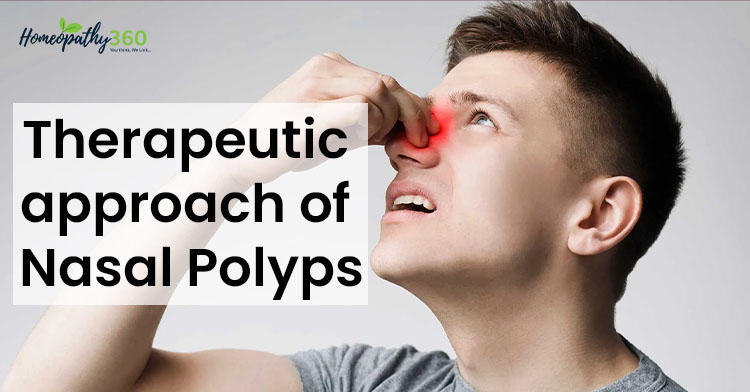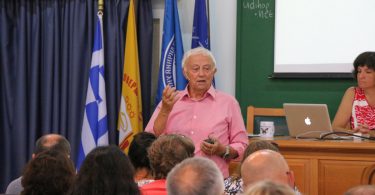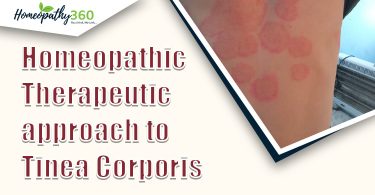
Abstract
Nasal polyps (NP) are benign lesions that can develop in the nasal cavity or in the mucosa of the sinuses (often in the outflow path of one or more sinuses). They provide a difficult diagnostic for the doctor to treat because of their elusive aetiology and propensity to reoccur. In addition to treating acute and chronic Nasal Polyps disease, homoeopathic medicine also aids in preventing subsequent issues.
Keywords: nasal polyps, Homoeopathic management.
Introduction
It is usually a smooth, pearly white or yellowish mass of varied size and is the prolapsed, pedunculated portion of the oedematous nasal mucosa or that of the paranasal air sinuses. It is made up of loose fibro-oedematous tissue, and ciliated columnar epithelium lines the surface. They are typically many, almost invariably bilateral, and their presence causes nasal obstruction. Both the ethmoid labyrinth and the antrum can occasionally produce polyps. An anterochoanal polyp is a growth that projects posteriorly into the naso-pharynx.
Causes
Some people experience discomfort and swelling (inflammation), but not others, can be attributed to chronic inflammation. most typical among adults in their 20s and 30s.
PATHOPHYSIOLOGY
The result of persistent edoema in the sinus and nasal mucosa is polyps. The middle meatus’s submucosa is particularly flimsy and prone to waterlogging, which makes the tissues swell. Although polyps can develop in any area of the nose or sinuses, the middle turbinate and ethmoids are the most typical places they start. Similar to this, the mucosa membrane expands to fill the whole lumen in the tiny cells of the ethmoidal labyrinth before projecting through the ostia and into the nose. After that, it is built at the ostia, creating the polyp.
CLINICAL SYMPTOMS
Nasal blockage, hyposmia, and post-nasal drip are the major symptoms. There is frequently some kind of discharge, either mucoid or purulent. Pus stands for concomitant sinus suppuration.
Sneezing with rhinorrhea; purulent, ethamoidal rhinorrhea.
Headaches can happen whether or not you have a sinus infection. Although asthma may co-exist and eczema frequently has a prior history, allergy symptoms are rarely a noticeable feature.
Hawking and coughing could be present as a result of post-nasal drip.
INVESTIGATIONS
Anterior and posterior rhinoscopy are effective clinical diagnostic tools for identifying nasal polyps. To rule out additional pathology, investigations such as PNS-X ray, X-ray lateral view-soft tissue nasopharynx, CT scan, and histological examination can be carried out.
HOMEOPATHIC MEDICINE
Ammonium carbonicum
Discharge of sharp, burning water. Stoppage at night, with long-continued coryza. Cannot breathe through nose. Snuffles of children. Epistaxis after washing and after eating. Ozćna, blows bloody mucus from nose. Tip of nose congested.
Free acrid, hot watery discharge corroding the lip. Sneezing. Nose sore to touch; ulcerative pain in nostrils. Loss of smell. Obstructed, stuffy feeling; constant and unavailing efforts to blow it out. Itching.
Apis mellifica
Coldness of tips of nose. Red, swollen, inflamed, with sharp pains.
Allium cepa
Sneezing, especially when entering a warm room. Copious, watery and extremely acrid discharge. Feeling of a lump at root of nose. Hay-fever (Sabad; Sil; Psor). Fluent coryza with headache, cough, and hoarseness. Polypus.
Cadmium sulphuratum
Tightness at root. Nose obstructed; polypus. Caries of nasal bones. Boils on nose. Nostrils ulcerated.
Kalium muriaticum
Catarrh; phlegm white, thick. Vault of pharynx covered with adherent crusts. Stuffy cold. Nosebleed.
Calcarea carbonica
Dry, nostrils sore, ulcerated. Stoppage of nose, also with fetid, yellow discharge. Offensive odor in nose. Polypi; swelling at root of nose. Epistaxis. Coryza. Takes cold at every change of weather. Catarrhal symptoms with hunger; coryza alternates with colic.
Nose Bleeds easily-becomes sore. Polypus.
Lycopodium clavatum
Nose.–Sense of smell very acute. Feeling of dryness posteriorly. Scanty excoriating, discharge anteriorly. Ulcerated nostrils. Crusts and elastic plugs . Fluent coryza. Nose stopped up. Snuffles; child starts from sleep rubbing nose. Fan-like motion of aloe nasi
Nose.–Violent, fluent coryza, lasting from one to three days, then changing into stoppage of nose, making breathing difficult. Discharge thin and watery, like raw white of egg. Violent sneezing coryza. Infallible for stopping a cold commencing with sneezing. Use thirtieth potency. Loss of smell and taste. Internal soreness of nose. Dryness.
Nitricum acidum
Green casts from nose every morning. Coryza, with sore and bleeding nostrils. Tip red. Stitches, as of a splinter in nose. Caries of mastoid. Nosebleed, with chest affections. Chronic nasal catarrh, with yellow, offensive, corrosive discharge. Nasal diphtheria, with watery and exceedingly excoriating discharge.
Reference
- Bansal M. Disease of ear nose & throat . New Delhi :1st ed. Jaypee Brothers Medical Publishers.(P)Ltd;2013
- Hall I. Simson, ColmanH. Bernard. Disease of the nose, throat and ear a handbook for students and practioners. 12th ed. Churchill Livingstone
- Allen HC. Allen‘s Keynotes Rearranged and Classified Leading Remedies of the Materia Medica and Bowel Nosodes. New Delhi: B. Jain Publishers(P)Ltd; 2005.
- Boericke William. New Manual Of Homoeopathic Materia Medica, New Delhi: B. Jain Publishers(P) Ltd; 2011.
- Clarke JH. A Dictionary of Homoeopathic Medicines. 3rded. New Delhi; B Jain (P)Ltd; Volume 3, 2005.





